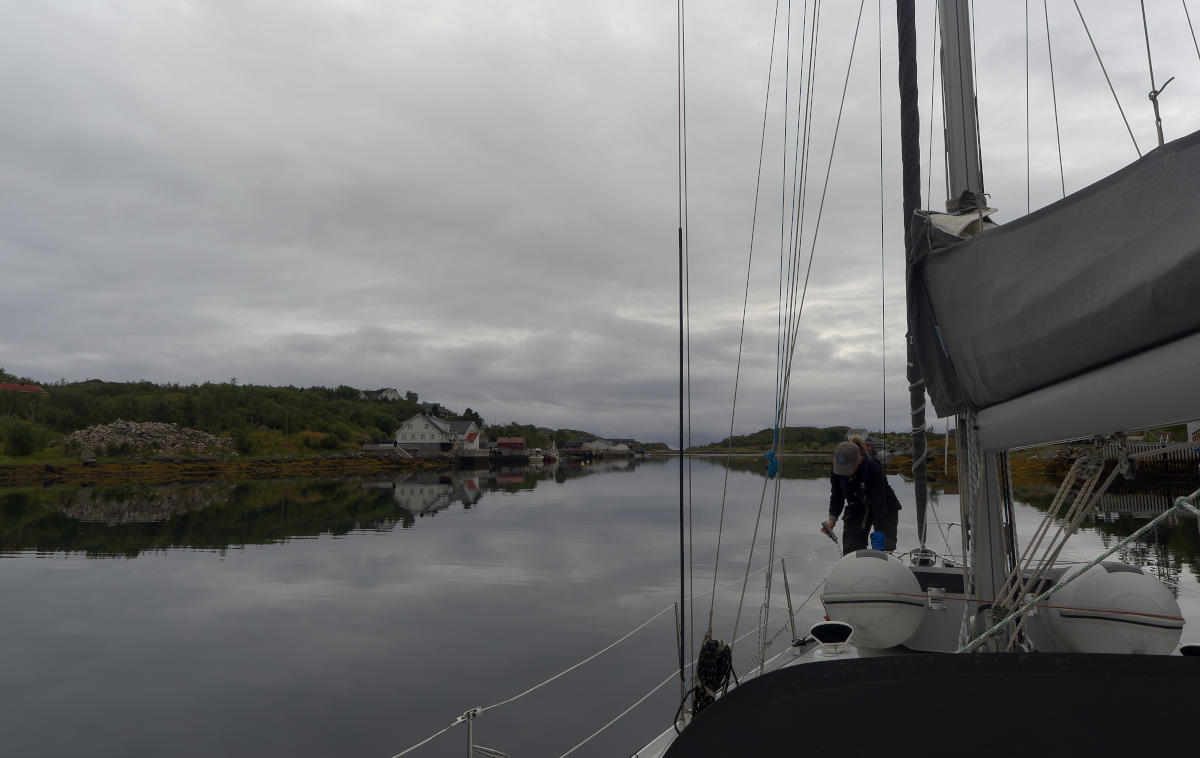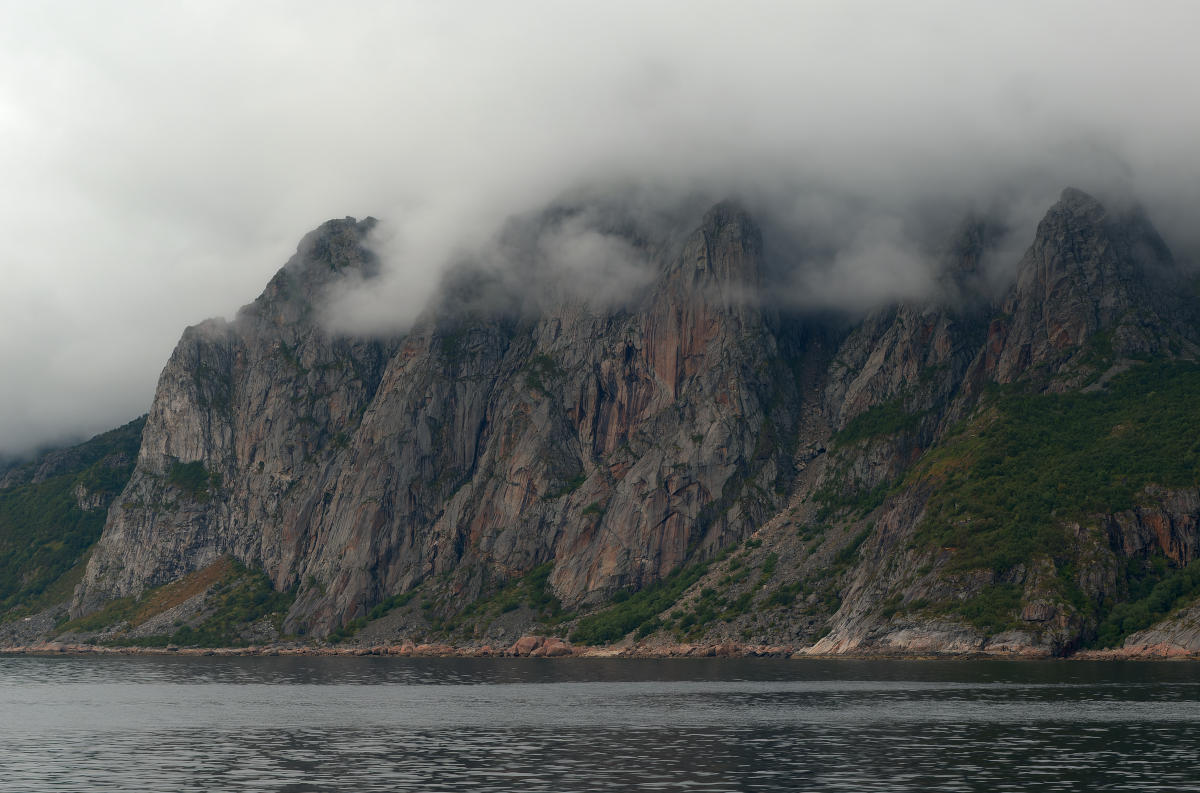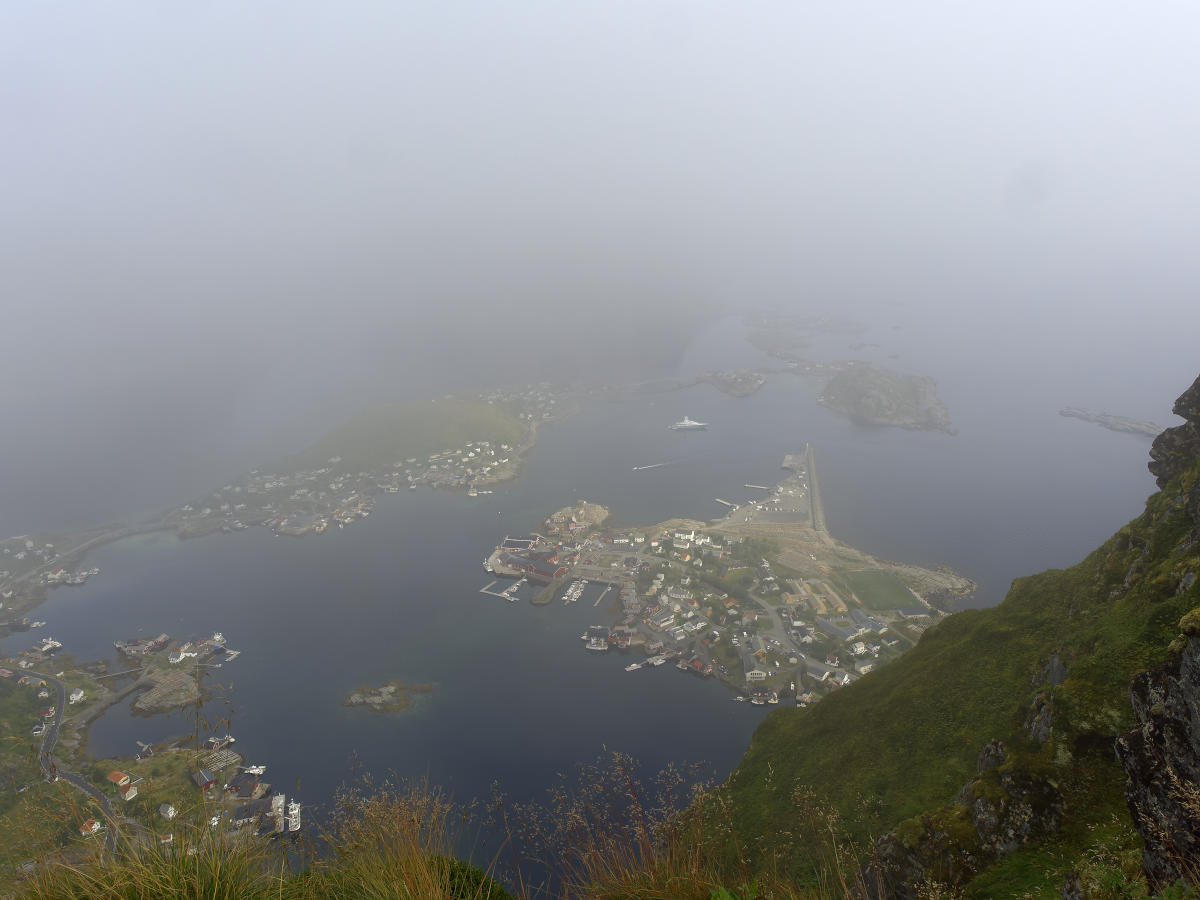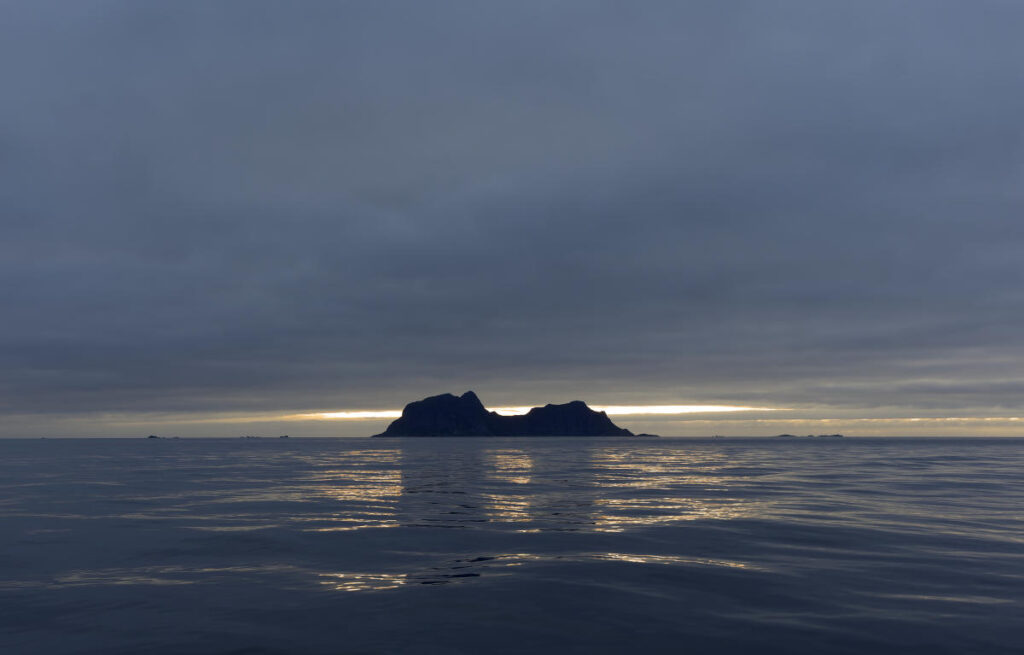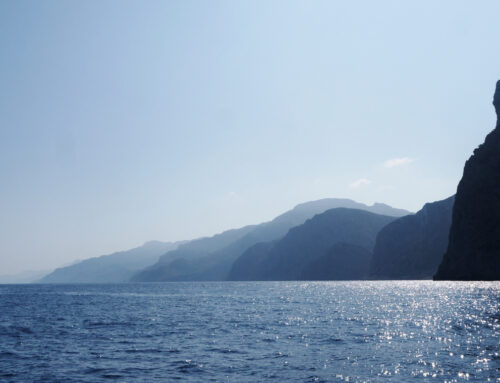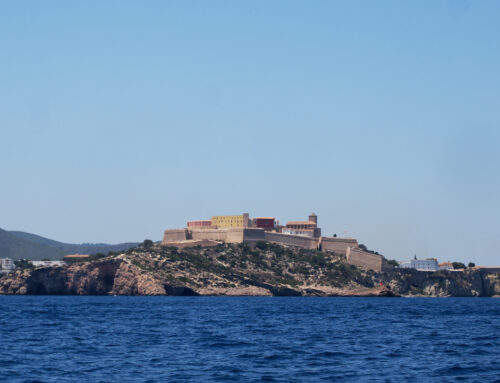Back to the Lofoten
SVOLVÆR
The next morning, with the mountains reflected perfectly in a mirror calm sea, we motored across the Vestfjord to Svolvær. On our way out of the bay, a pair of sea eagles bade us a solemn farewell from a marker on one of the skerries. The Vestfjord was glassy calm and almost devoid of boat traffic. Even so we somehow still ended up on a collision course with every other vessel, cargo, ferry or sail, that we crossed paths with. It was, though, an easy and pleasant crossing, made all the more pleasant by a visit from a pod of dolphins, and another sea eagle on a marker at the island of Litlmolla.

Cod is everywhere in the Lofoten.
After a crossing of about four and a half hours, we tied up in Svolvær, completely alone, at the city centre harbour. We immediately got about picking up the charge regulator that had been waiting since days after our last visit several months earlier in June. We did a bit of food shopping, enjoyed another Bakalao at one of the restaurants and stayed the night.
HOPEN
Having done what we came to do in Svolvær, we slipped out of the harbour late morning and made for what we’d hoped would be the pleasant and secluded little inlet, Hopen. We were keen to spend a few more days in the Lofoten before heading south, and as the weather forecast was good for the next few days, we headed west.
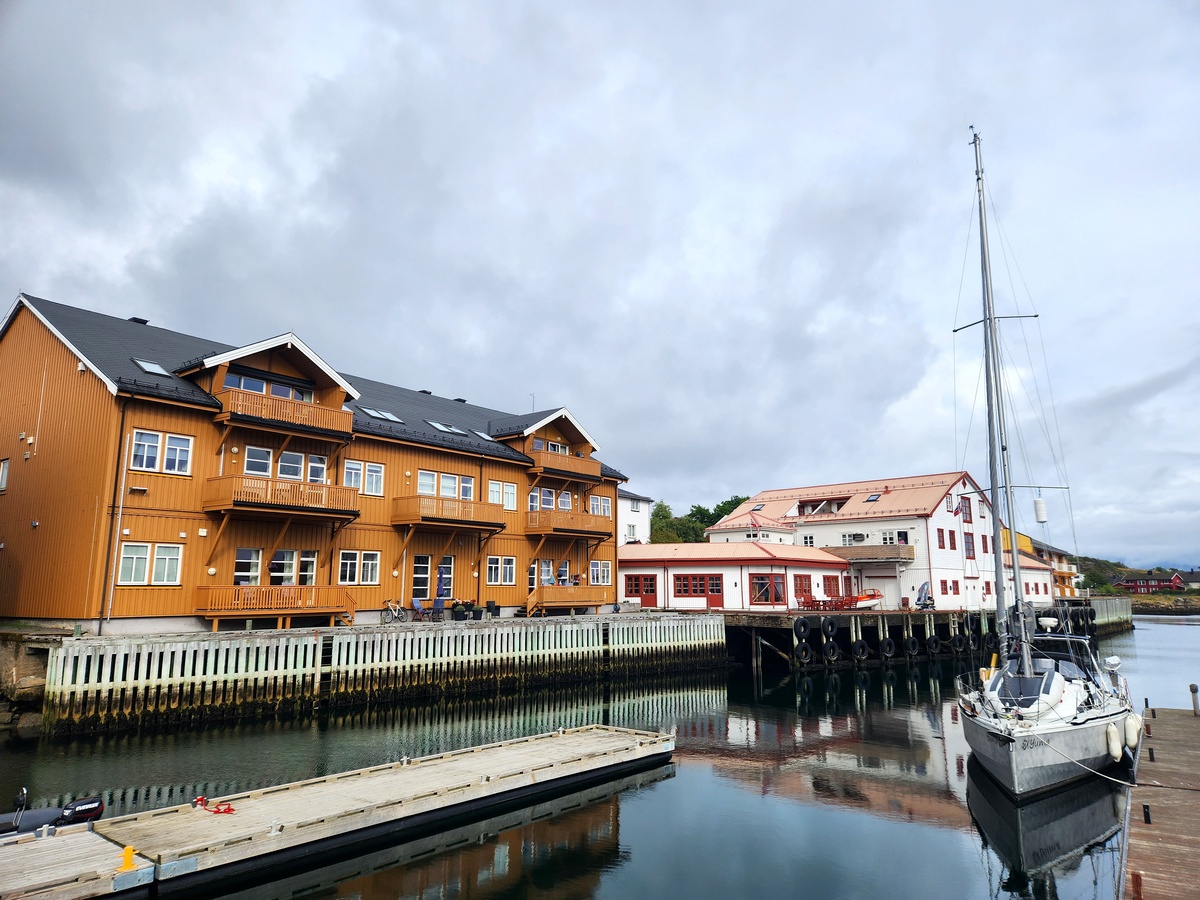
Yuma at the local pub’s pontoon in Kabelvåg.
Along the way we pulled into Kabelvåg, a pleasant and uninspiring old fishing village. As we inadvertently had tied up at the local pub, rather than at a public pontoon, we felt obliged to start our stay with a drink at the pub. Oh damn! Next, we walked around the town looking for a photo exhibition that SY Snow Bear had mentioned to us. We found no sign of such exhibition (presumably packed up and gone), and, aside from a bus shelter made out of old skis, found little else to get excited about, so we returned to Yuma and pushed on to Hopen.

Frederieke admiring the local ski-fence.
In our pilot books, Hopen is described as a ‘spectacular landlocked anchorage beneath mountains’ and a ‘lovely sheltered anchorage’. Needless to say, we were very much looking forward to a bit of loveliness and seclusion. However, upon arriving at Hopen, it quickly became obvious that one needed to put on blinkers and look in one direction only to make this anchorage spectacular. The fish factory, E10 highway and surrounding town certainly detracted from any of the claimed loveliness, seclusion and isolation. Perhaps Svalbard anchorages had spoiled us!
Anchorage at Hopen. Not so bad after all.
Oh well, it was just for the night and, after a couple of attempts we managed to get good holding for the anchor in the soft ooze bottom. As the guidebooks said, the location was sheltered, and, under the watchful gaze of the waterside houses we settled in for a pleasant evening.
REINE
The next morning brought, yet again, complete calm and so, under low, leaden skies, we motored (yet again) along the coast towards Reine. For most of the trip the clouds hung down around the lower skirts of the peaks, allowing us views only of the ankle sections of their precipitous climbs skywards. Even so, these were bare, near vertical rock faces intersected with plunging gullies and narrow ledges where trees and grasses grabbed very slim opportunities to take hold.

Reine: a spectacular setting.
Our destination was Reine, one of the last towns as one travels west along the island chain and a tourist mecca. As we entered the harbour the sun shone in under the breaking clouds, making it breathtakingly obvious why tourists flock in their tens of thousands to the town. Spread across the shoreline of the island and an archipelago of islets and skerries, this fishing village’s quaint wooden buildings perch over the water’s edge with a backdrop of the almost impossibly abrupt and imposing mountains of the Lofoten.
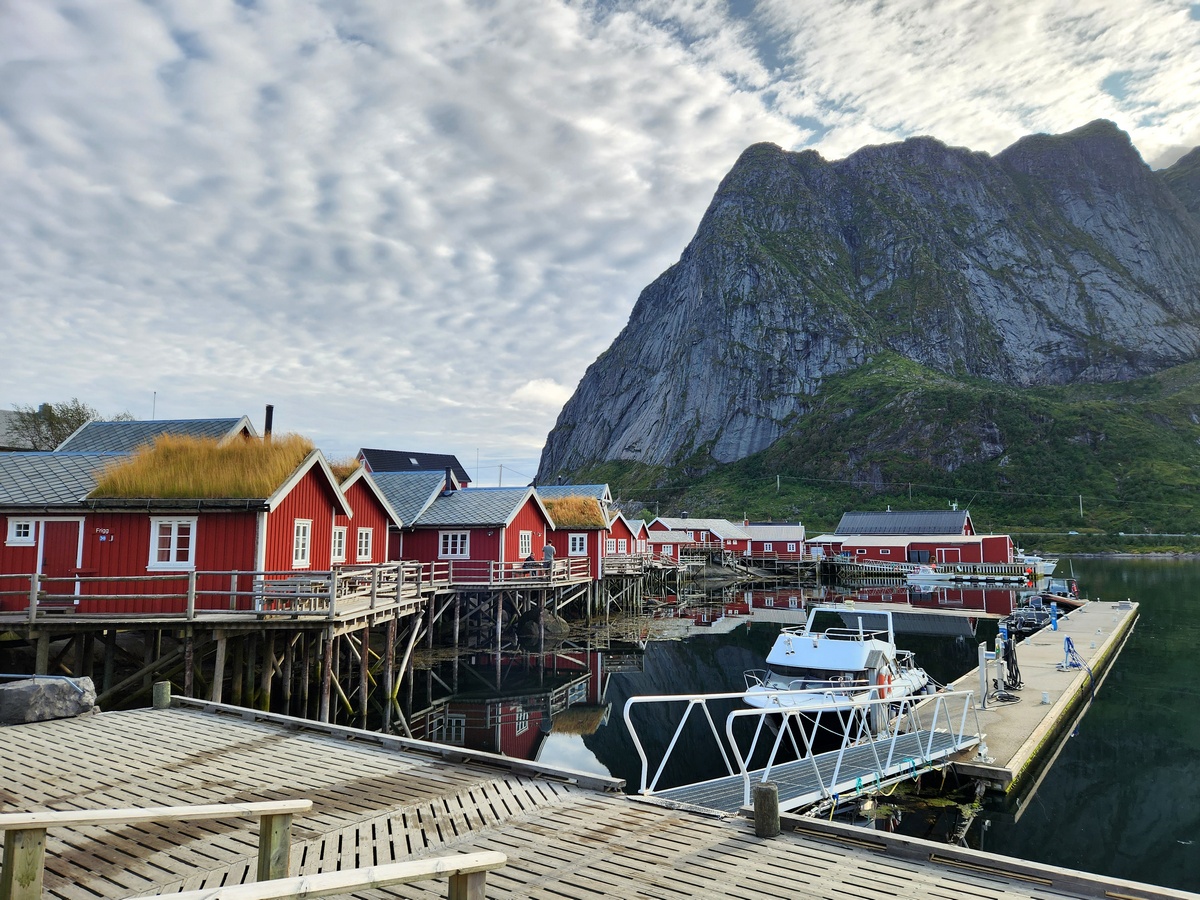
Houses with hairdos.
Instagramablly spectacular to be sure, it is spectacularly touristy too and the less said the better. We spent one night at the Reine Gjestehavn, had a couple of nondescript but spectacularly priced meals and did one very steep, extraordinarily crowded and rather fogged-in hike up the Reinebringen. As with other hikes we’d done in the Lofoten, the Sherpa steps that had been put in place in 2019 made this walk less arduous than would otherwise been the case. Unfortunately, the panoramic view made famous on Instagram was covered in clouds and fog, and we moseyed back to Yuma. The next afternoon, we headed south towards the island of Lovund, almost exactly 100nm to the south.

